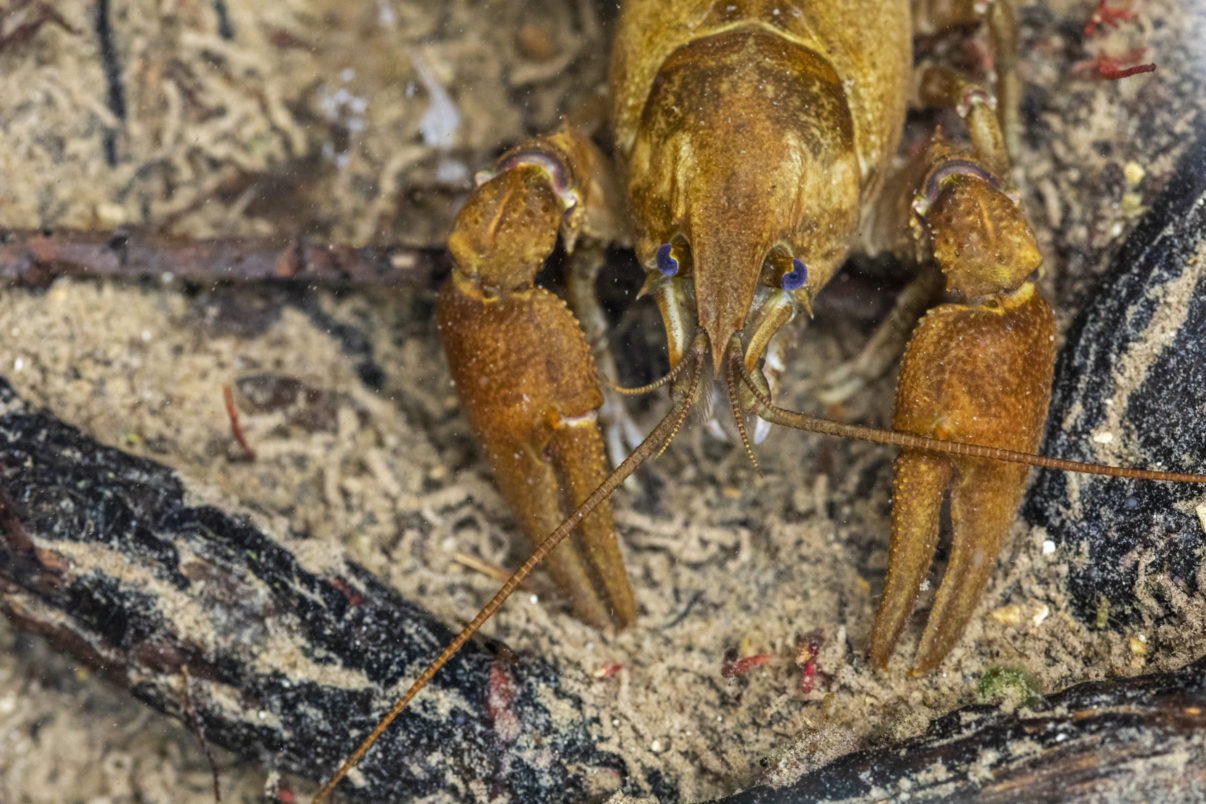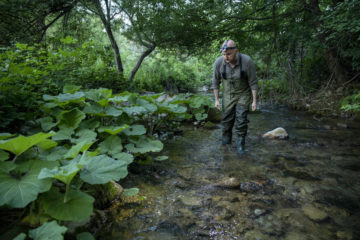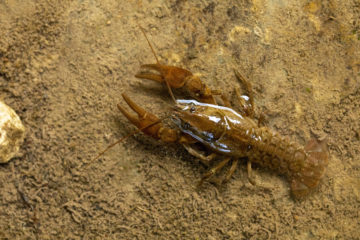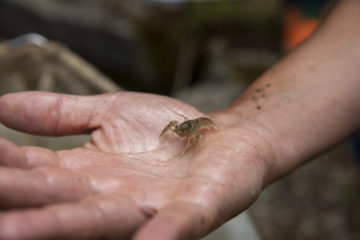The white-clawed crayfish, which is a keystone species in freshwater ecosystems, is in decline across much of Europe. A positive feasibility study carried out on streams in the Central Apennines rewilding area means a restocking programme can now be carried out, thereby enhancing the ecological condition of these waterways.

Positive first step
Small and bronze-coloured, with pale cream or rose undersides on its claws, the white-clawed crayfish is native to Italy and large parts of Europe. It inhabits freshwater streams, hiding underneath stones and rocks and in small crevices, where it forages for food. An omnivorous crustacean, it eats invertebrates, carrion, water plants and dead organic matter, and is mostly active at night.
Keystone species

The positive outcome of the study is good news because the white-clawed crayfish, as a keystone species, plays an important role in the freshwater ecosystems where it occurs. The fact that specimens were found in some of the waterways where the study was conducted indicates that the streams are already in relatively good health; boosting populations of the crustacean will restore the condition of these waterways further.
“The native white-clawed crayfish is an important link in the natural food chain of freshwater habitats, particularly rivers and streams,” explains Tommaso Pagliani, a freshwater biologist and crayfish expert who conducted the study, with help from members of the Rewilding Apennines team. “They provide an important food source for animals such as otters, fish and birds, and sustain a subtle balance within the invertebrate community, as they are active predators on smaller animals. They also help to keep the waterways where they occur clean by feeding on decaying matter.”
Multiple threats

The white-clawed crayfish is in decline across much of its European range. Multiple threats to the crustacean include crayfish plague (caused by the fungus Aphanomyces astaci) which was introduced by non-native crayfish species, as well as pollution and poaching (it is considered a delicacy in many European countries). Climate change, which is heating freshwater temperature levels and lowering the amount of dissolved oxygen in the water as a result, is also having a negative impact.
“It is difficult to control poaching,” says Pagliani. “Nevertheless, restocking crayfish in waterways in the Central Apennines rewilding area means the animal should enjoy better protection. The feasibility study, which assessed a range of parameters, also established that the water temperature and dissolved oxygen levels in these streams are suitable.”
Next steps

The feasibility study assessed waterways at three locations: the Gizio at Pettorano sul Gizio, the Verde at Borrello and the Romito at Morino (a fourth location may also be added soon). Following the positive outcome, reintroduction centres now have to be set up at these locations – these house a number of water tanks, plus a range of other equipment for rearing crayfish.
Once the centres have been established, specimens of male and female crayfish are collected in late summer from wild donor populations in the basins of the three waterways. They are then placed in tanks in the reproduction centres, where they mate. When the females lay eggs they are removed to a separate tank, and the eggs eventually hatch into larvae. In late summer to early autumn the following year, the baby crayfish are then introduced into the suitable streams, at around three months of age, to begin their existence in the wild.
“We will keep monitoring the crayfish in each stream and maintain the restocking process every year until stable populations are created,” explains Pagliani. “It’s not an exact science, but I think this will take two to three years.”
